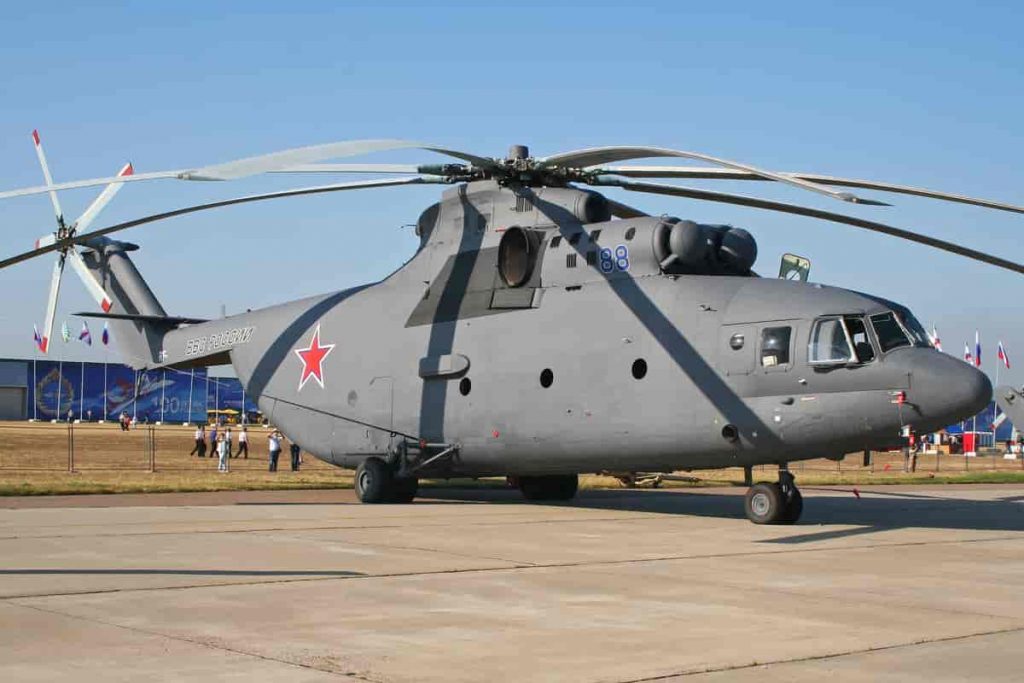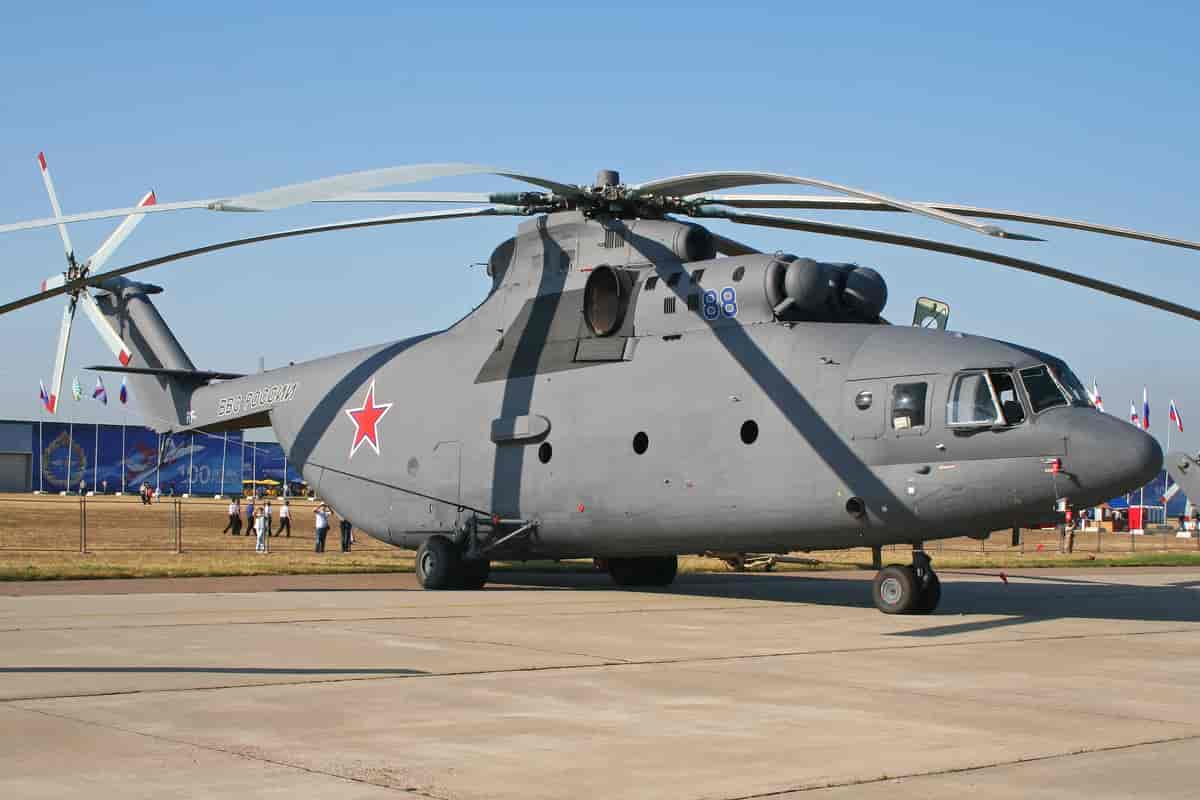
Based on a report from TASS, the general director of the United Engine-Building Corporation, Vadim Badeh, has announced plans to equip the Mi-26 helicopter, recognized as the world’s largest, with a new and more formidable PD-8V engine.
Vadim Badeh, the lead developer at UEC-Kuznetsov, has initiated a project team tasked with developing the PD-8V engine specifically designed for the Mi-26 heavy helicopter. This innovative engine draws upon the existing PD-8 aircraft engine gas generator as its foundation.
Moreover, Vadim Badeh has disclosed that the PD-8V engine will boast a 15% increase in power, accompanied by the integration of a digital control system for enhanced performance and notable fuel efficiency.
Currently, the Lotarev D-136 engine serves as the power source for the Mi-26. This turbofan engine type, known for its endurance and dependability, generates a maximum thrust of 137 kN [30,800 lbf] through the combination of a gas turbine engine and a fan.
The Mi-26 helicopter, developed by the Soviet Union during the 1970s, is a heavyweight transport aircraft capable of a maximum takeoff weight of 56,000 kg. It can internally or externally accommodate up to 20 metric tons of cargo, making it an indispensable asset for the Russian military when operating in remote and inaccessible locations.
With its eight-bladed main rotor boasting a diameter of 32 meters, the Mi-26 holds the distinction of being the largest helicopter in existence. These impressive technical specifications render the Mi-26 a highly desirable transport helicopter for the Russian military, facilitating the transportation of bulky equipment and supplies that would otherwise be challenging to reach using alternative means.
The Mi-26 relies on two Lotarev D-136 turboshaft engines, granting it a maximum speed of 295 km/h and a range of 800 km. It maintains a crew of five, comprising two pilots, a flight engineer, a navigator, and a loadmaster. Advanced avionics and navigation systems, such as a digital autopilot, weather radar, and satellite navigation, equip the Mi-26 with exceptional capabilities, ensuring reliable and secure military operations.
The Mi-26 helicopter possesses several distinctive features that set it apart in military operations. Its exceptional lifting capacity allows it to transport up to 20 tons of cargo, surpassing any other helicopter in the world. This capability makes it an optimal choice for the efficient transportation of heavy military equipment, including tanks, artillery, and various vehicles.
Furthermore, the Mi-26 exhibits remarkable adaptability to diverse weather conditions, such as extreme cold and hot temperatures, high altitudes, and strong winds. This versatility enables it to operate effectively in harsh environments like the Arctic or high mountain regions, providing valuable support in challenging military scenarios.
Another notable attribute of the Mi-26 is its capability to transport troops and equipment in a single flight. With the ability to accommodate up to 90 troops or 60 stretchers, along with their accompanying equipment, the Mi-26 offers an efficient and expedient transportation solution for military operations.
Equipped with advanced avionics and navigation systems, the Mi-26 excels in low visibility conditions, including nighttime operations and foggy environments. This proficiency enables it to perform precision flying, making it an ideal choice for search and rescue missions and other military operations that demand utmost accuracy.
Regarding the Mi-26’s involvement in Ukraine, Russia employed these helicopters during the 2014 annexation of Crimea for troop and equipment transportation, as well as the evacuation of Russian citizens from the region. Additionally, reports have emerged suggesting the utilization of Mi-26 helicopters by Russian-backed separatists in eastern Ukraine, aiding the transportation of troops, equipment, and supplies to the conflict zone.
Throughout its operational history, the Mi-26 has unfortunately experienced several crashes. Notably, on August 19, 2002, a Mi-26 crashed in Chechnya, resulting in the tragic loss of 127 lives. The crash was attributed to a missile attack by Chechen rebels. Another significant incident occurred on December 7, 2010, when a Mi-26 crashed in Afghanistan, claiming the lives of 38 individuals, including 30 American soldiers and 8 Afghans, due to a technical malfunction.
Despite these high-profile crashes, the Mi-26 remains an indispensable component of the Russian military’s helicopter fleet. Its unmatched capacity to transport heavy cargo and personnel positions it as a crucial asset for diverse military operations.





